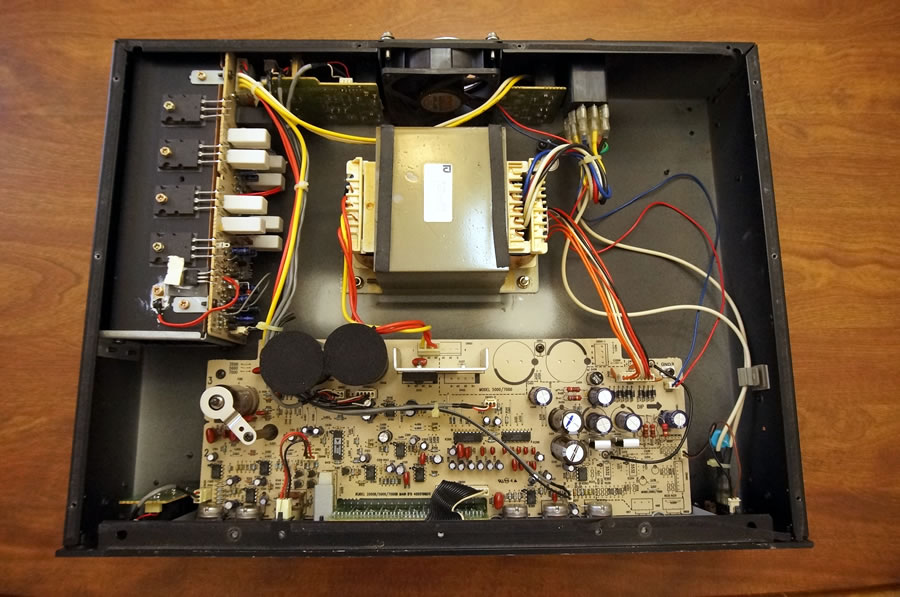Dynamic
Headroom
According
to their manual, the 3500 is rated for 240W/8Ω and 350W/4Ω.
Now I begin to see why the psu is such. It has to do with
what is known as "dynamic headroom".
For
normal use, the Hartke 3500 is guaranteed up to 240W/8Ω.
However, it is capable of up to 320W in very short burst.
The catch phrase is "short burst". If one attempts
to play with 320W continuously, the amplifier will first
distort, then followed by failure.
An
amplifier with a power supply of this nature is said to
have a 1.5dB dynamic headroom. The 1.5dB refers to the 120W
in reserve power (120W is half of 240W, therefore it's 1.5dB).
In
practical terms, what all these technical jargon means is
a guitarist can play as loud as 240W continuously without
the amplifier failing. Should he decide to strike a string
hard, he can expect it to sound louder because there's a
"reserve" of 120W.
However,
he must be careful in using this reserve. Playing at "reserve"
level all the time will lead to amplifier failure.
|
